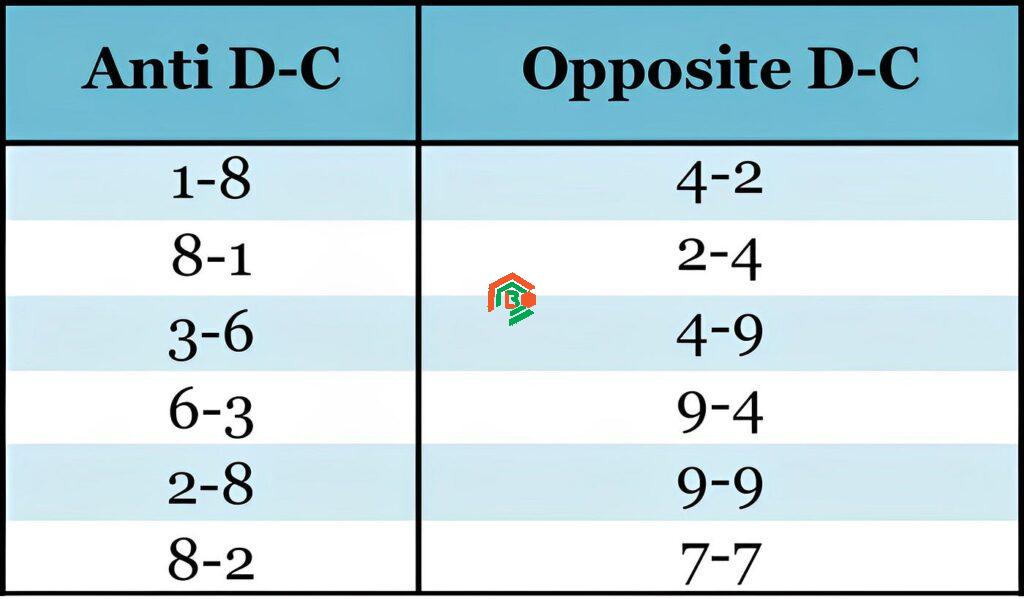If you’ve ever wondered what the best driver and conductor number combination is—and you want it explained like you’re 10 years old—you’re in the right place! Whether you’re doing a school project, fixing up your car, or working on a small home wiring setup, using the right combination of driver and conductor numbers keeps everything safe, efficient, and working just right.
What Are Driver and Conductor Numbers?
Let’s break it down really simply.
Think of driver numbers like the muscle or power behind an electrical or mechanical system. These are typically things like amperage, power ratings, or drivers in LED systems, responsible for sending out the power.
Now, conductor numbers usually refer to the size or gauge of the wire. Conductors are what carry the electricity. They can be thick or thin, depending on how much power they need to carry.
So when we say “driver and conductor number combination”, we’re really talking about matching how much power is sent (driver) with what can safely carry it (conductor). If they don’t match, things can overheat, stop working, or even cause fires.
Imagine trying to push a waterfall through a straw. Bad idea, right? That’s what happens when your driver sends more power than your conductor (wire) can handle.
Why Do Driver and Conductor Numbers Matter?
Using the wrong combination of driver and conductor numbers is like using the wrong-sized shoes: it might work, but not for long—and it could hurt!
Here’s why matching matters:
- Safety First: Wrong combos can cause overheating, short circuits, or even electrical fires.
- Efficiency: When everything is matched properly, the system uses energy wisely without wasting it.
- Device Lifespan: Good combinations reduce wear and tear on devices, meaning they last longer.
- Legal & Code Compliance: In the U.S., certain wire sizes and power outputs are required by NEC (National Electrical Code).
Best Driver and Conductor Number Combination (For Common Use)
So what is the best combination? Well, it depends on what you’re doing. There isn’t one combo that works for everything, but we’ve got the best combos for home use, cars, and school projects below.

Safe Combo for Home Wiring
When you’re wiring stuff around the house (like outlets, lights, or appliances), you need to think about how much current you’re using. For most basic home wiring in the USA:
- Driver: 15-20 amp circuit breaker
- Conductor: 14 to 12 gauge copper wire
This combo works well because:
- 14-gauge copper wire safely handles up to 15 amps
- 12-gauge copper wire can handle 20 amps
👉 Tip: Don’t use 14-gauge wire for a 20-amp breaker. That’s unsafe and not allowed by code.
Keywords used here: conductor wire size for home, safe wire pair for DIY, driver and conductor pairing guide
Best Combo for Car Systems
If you’re into cars and want to upgrade your audio system or wire a dash cam, here’s what you need to know.
- Driver: Car amp with 500-1000 watts RMS
- Conductor: 4 to 8 gauge copper wire
Why this works:
- 4-gauge wire can handle around 100 amps over short distances (perfect for powerful subwoofers)
- 8-gauge works well for systems under 400 watts
👉 Tip: Always check the amp draw of your system and match with the correct wire.
Keywords used: best wire gauge for car audio, common wire gauge combinations, how to choose wire size
Easy Combo for School Projects
If you’re doing a science fair project with batteries, LEDs, or small motors, here’s the safest bet:
- Driver: 9V battery or AA battery pack
- Conductor: 22 to 26 gauge stranded wire
Why this combo rocks:
- Thin wires are flexible and safe for low voltage
- No risk of overheating with small loads
- Perfect for breadboards and small circuits
👉 Tip: Don’t use thick wires in small projects—they’re harder to connect and overkill for your needs.
Keywords used: copper wire combo for school project, wire thickness for electronics
How to Choose the Right Number Combo?
Picking the right combo isn’t hard if you follow these 3 simple steps:
- Know Your Load: What’s the total current (amps) or wattage your system will use? This tells you how “strong” your driver is.
- Check the Distance: Longer wires need to be thicker to prevent voltage drop.
- Match the Wire: Use charts (or see our table below) to match your amps with the correct wire gauge.
Bonus Tip: Always go a little thicker if you’re unsure. It’s safer and often more efficient.
Mistakes People Make (And How to Avoid Them)
Even smart people mess up wiring when they rush or guess. Here are some common mistakes:
- Using too thin wires: This causes overheating and poor performance.
- Overloading circuits: If your driver outputs more than your conductor can handle, BOOM—trouble.
- Ignoring voltage drop: If your wire run is too long, the voltage may drop too low to power your device properly.
- Mixing aluminum and copper: Never mix these directly; it can cause corrosion and failures.
Avoid these by: always checking wire ampacity charts, using online calculators, and not just guessing.
Comparison Table: Good vs Bad Combinations
Let’s keep this simple with a table that even a 10-year-old could understand.

Use CaseDriver (Power Source)Conductor (Wire Gauge)Good or Bad?Why?
Home lights 15A circuit 14 AWG ✅ Good Perfectly matched and safe
Car subwoofer (1000W) 100A amp draw 10 AWG ❌ Bad Wire too thin for that much power
Arduino LED project 5V output 24 AWG ✅ Good Safe, small, and flexible
Air conditioner 30A circuit 14 AWG ❌ Bad Wire can’t handle that much current
Home outlets 20A breaker 12 AWG ✅ Good Code-compliant and safe
What Makes a Combo “Good”?
- The wire can handle more current than the driver sends.
- The distance is short enough to prevent voltage drop.
- The wire type (copper vs aluminum) matches the system.
- Insulation is rated for the right voltage and environment.
Why Some Combos Fail
- The driver pushes too much current for the wire to handle.
- The wire is too long or too thin, causing heat or drop.
- Wrong materials—cheap or mismatched wires break down.
- Connectors aren’t secure, causing loose contact or sparks.
Real-Life Examples
- Example 1: DIYer installed 14-gauge wire for a 20A kitchen outlet. Result? The wires overheated and tripped the breaker every time the toaster and microwave ran together.
- Example 2: A car enthusiast ran a powerful amp with only 10-gauge wire. The bass would cut out randomly because the wire got too hot and voltage dropped.
- Example 3: A kid used solid copper wire in a school project but it kept snapping. Solution? Switched to flexible 24 AWG stranded wire—no more breaks!
Tools to Help You Pick the Best Combo
Luckily, there are tons of tools out there that make picking the best driver and conductor number combination super easy.
- Wire Size Calculators: Just plug in voltage, amperage, and distance (many free online).
- NEC Wire Ampacity Charts: Official U.S. standards for home and commercial wiring.
- Voltage Drop Calculators: Help you plan long wire runs.
- Mobile Apps: Like “Wire Gauge Calculator” and “Circuit Wizard” on iOS and Android.
👉 Pro tip: If you’re ever unsure, go thicker—it’s safer.
The Bottom Line
Choosing the best driver and conductor number combination isn’t rocket science—but it does take a little planning.
Here’s what you need to remember:
- Driver = the power (like the amp, battery, or circuit breaker)
- Conductor = the wire that carries that power
- Match them based on amperage, distance, and use case
- For homes, use 12-14 AWG with 15-20A circuits
- For cars, use 4-8 AWG with 40-100A systems
- For school projects, go small and safe with 22-26 AWG
Making the right combo means your projects are safe, efficient, and long-lasting. Whether you’re 10 or 100, the rules stay the same: right driver + right conductor = a winning team.


